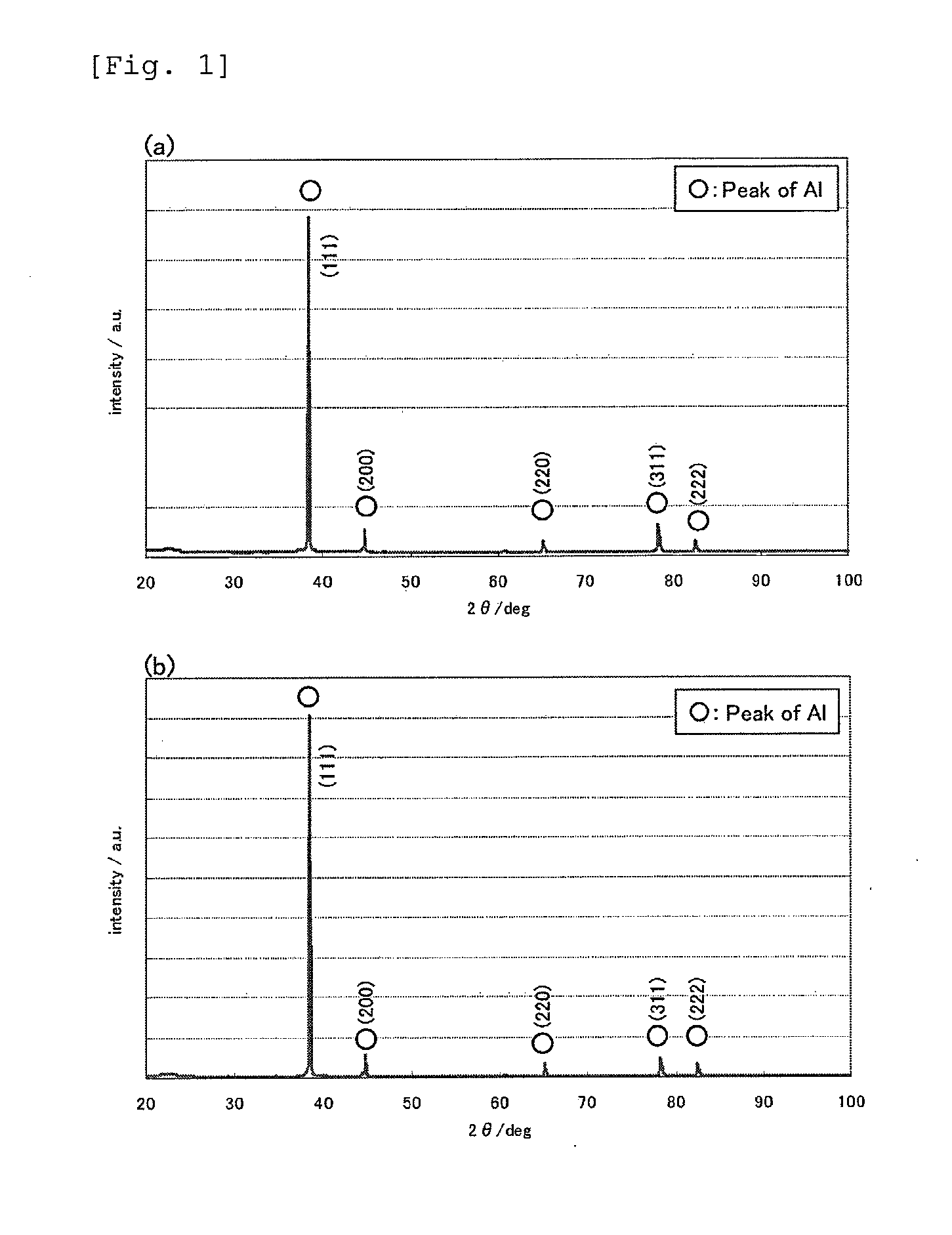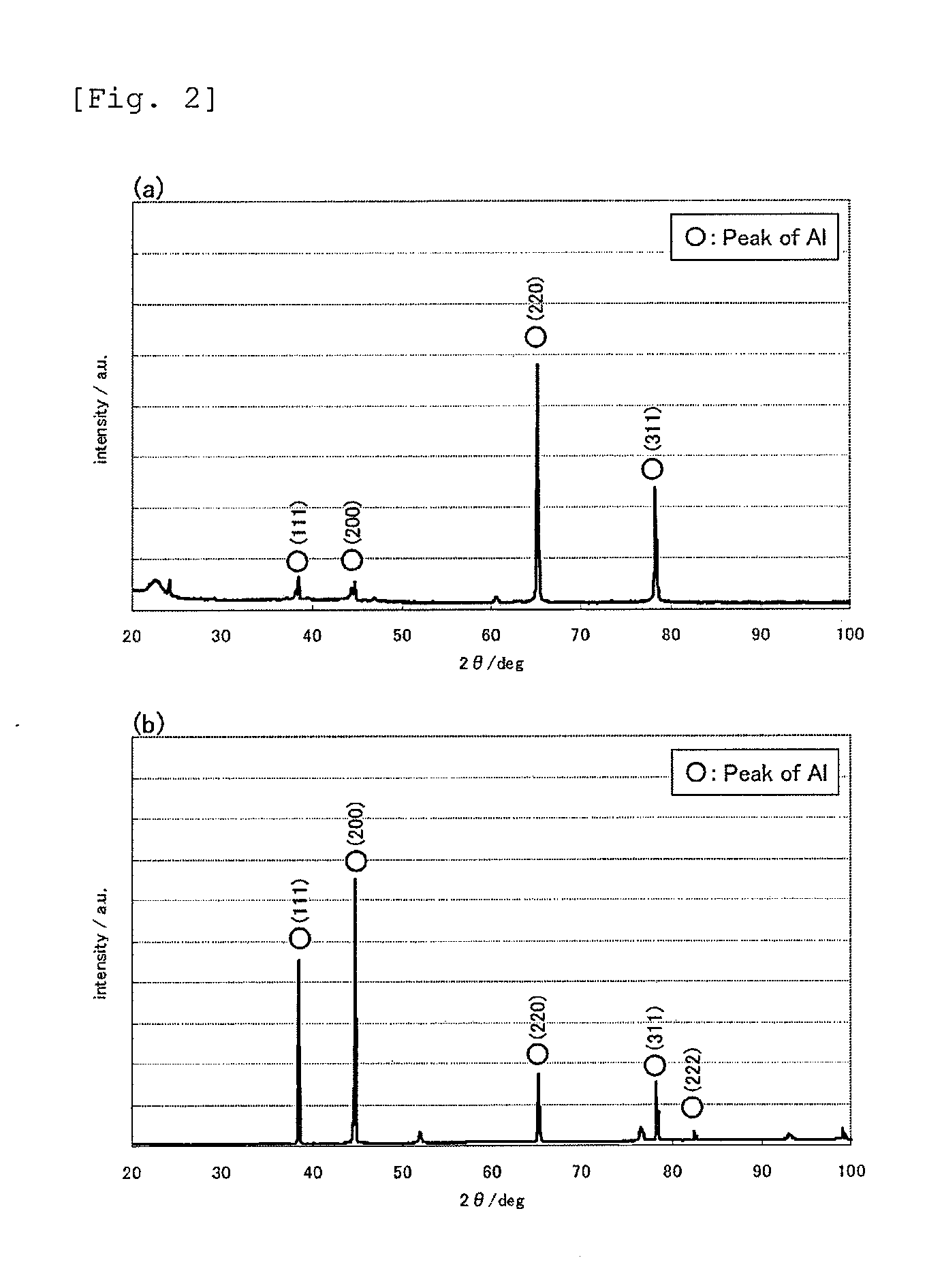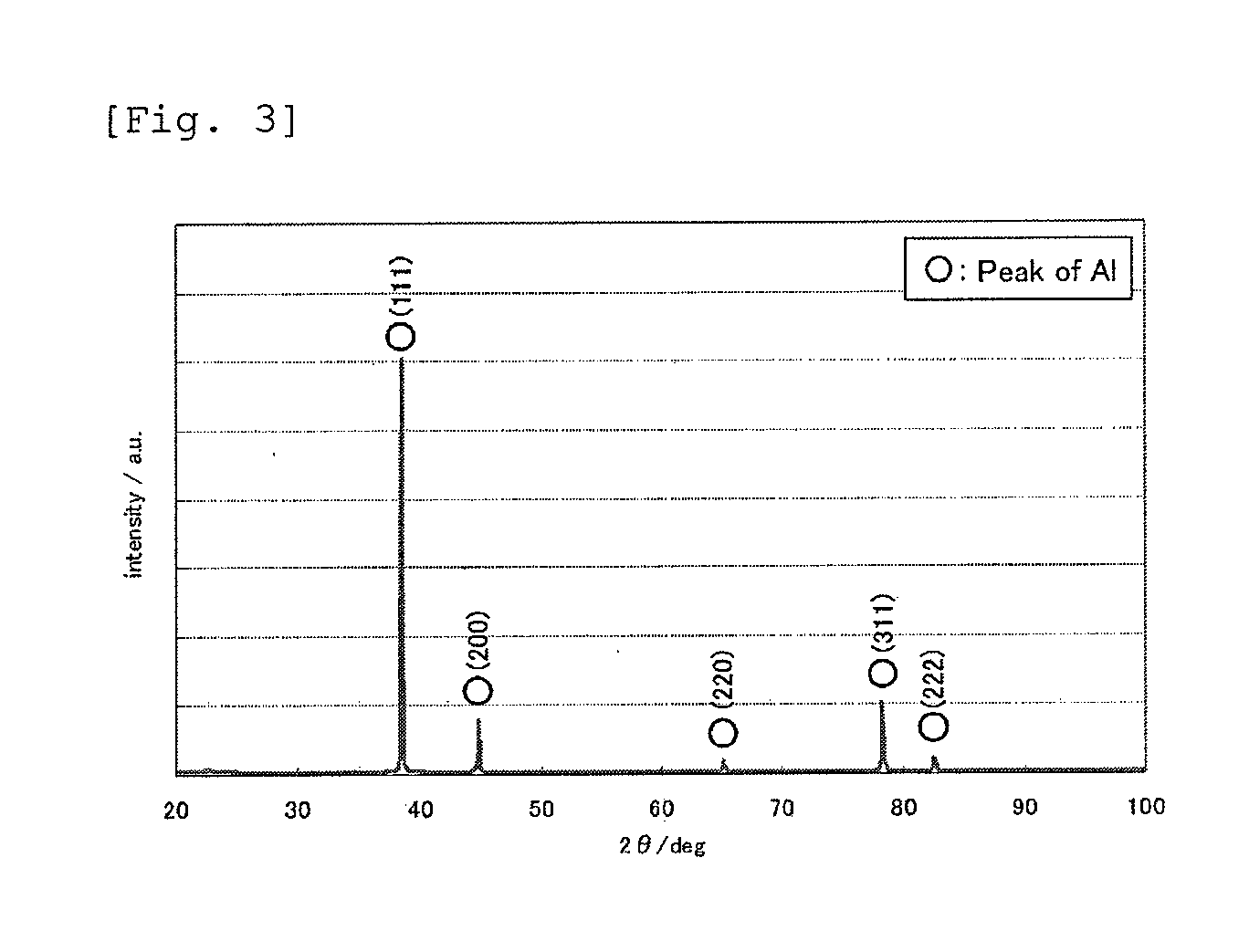Method for producing aluminum foil
- Summary
- Abstract
- Description
- Claims
- Application Information
AI Technical Summary
Benefits of technology
Problems solved by technology
Method used
Image
Examples
example 1
Production of Heat-Treated Aluminum Foil
[0046]Dimethyl sulfone, anhydrous aluminum chloride, and trimethylamine hydrochloride were mixed in a molar ratio of 10:3:0.1 and dissolved at 110° C. to prepare an aluminum electroplating solution. Using an aluminum plate having a purity of 99.99 mass % as an anode and a stainless steel plate as a cathode (a substrate for forming an aluminum film), an electroplating treatment was performed for 17 minutes at an applied current density of 3 A / dm2 while stirring the plating solution maintained at 95° C. at a stirring rate of 300 rpm. After 17 minutes, the stainless steel plate having an aluminum film formed on the surface thereof was removed from the plating solution, washed with water, and then dried. Subsequently, from the end portion thereof, forceps were inserted between the aluminum film and the stainless steel plate and moved to slide along the stainless steel plate. As a result, the aluminum film was easily separated from the stainless st...
example 2
[0049]A heat-treated aluminum foil was obtained in the same manner as in Example 1, except that the heat treatment was performed in ambient atmosphere at 80° C. for 120 minutes. The heat-treated aluminum foil had high purity (aluminum content: 99.90 mass %, S content: 0.04 mass %, Cl content: 0.06 mass %), and its moisture content was lower than the moisture content of a commercially available rolled foil (21.4 ppm). The crystal orientation was such that the (111) plane had a preferred orientation with respect to the surface of the foil, and the ratio of the X-ray diffraction intensity of the (111) plane to the X-ray diffraction intensity of the (200) plane was as high as 10.8 on the front side (almost the same on the backside). The tensile strength was 210 N / mm2, which is higher than before the heat treatment.
example 3
[0050]A heat-treated aluminum foil was obtained in the same manner as in Example 1, except that the heat treatment was performed in ambient atmosphere at 500° C. for 5 minutes. The heat-treated aluminum toil had high purity (aluminum content: 99.93 mass %, S content: 0.03 mass %, Cl content: 0.04 mass %), and its moisture content was lower than the moisture content of a commercially available rolled foil (21.4 ppm). The crystal orientation was such that the (111) plane had a preferred orientation with respect to the surface of the foil, and the ratio of the X-ray diffraction intensity of the (111) plane to the X-ray diffraction intensity of the (200) plane was as high as 6.4 on the front side (FIG. 8, almost the same on the back side). The tensile strength was 210 N / mm2, which is higher than before the heat treatment.
PUM
| Property | Measurement | Unit |
|---|---|---|
| Temperature | aaaaa | aaaaa |
| Thickness | aaaaa | aaaaa |
| Percent by mass | aaaaa | aaaaa |
Abstract
Description
Claims
Application Information
 Login to View More
Login to View More - R&D
- Intellectual Property
- Life Sciences
- Materials
- Tech Scout
- Unparalleled Data Quality
- Higher Quality Content
- 60% Fewer Hallucinations
Browse by: Latest US Patents, China's latest patents, Technical Efficacy Thesaurus, Application Domain, Technology Topic, Popular Technical Reports.
© 2025 PatSnap. All rights reserved.Legal|Privacy policy|Modern Slavery Act Transparency Statement|Sitemap|About US| Contact US: help@patsnap.com



